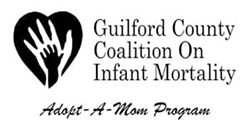CQI Case Studies
Adopt-A-Mom (AAM) coordinates prenatal care for pregnant women who are not eligible for Medicaid, do not have private insurance to cover the cost of care, and cannot afford to pay out of pocket for care; and refers clients to community resources for additional support services.
CQI Goal
Begin to understand the effectiveness of referrals to community resources by learning whether moms take action on the referrals given, what actions the receiving agencies take to engage moms, whether moms enrolled in services, and their satisfaction with services or their reasons for choosing not to participate.
CQI Cycle
Plan
Developed a referral follow-up protocol and data tracking sheet in order to learn about referrals from both moms and service providers.
Do
Collected data on all referrals made over a three-month period via phone calls with each mom and the corresponding agencies that received the referrals.
Study
Analyzed data and matched responses from moms and the receiving agency to understand “both sides of the story.” Identified which agencies tend to receive the majority of AAM’s referrals (top 4). Learned most referrals (from the sample called) were not resulting in enrollments for three primary reasons: a decision made by the mom (e.g., not interested, decided to rely on family support, etc.), program wait lists, and the need for better communication and protocols between AAM and its referral partners.
Act
Decided to 1) engage leading referral partners to identify how to work together more effectively and 2) develop and test use of an “after-visit summary” in the next cycle, a practice that has been shown to enhance patients’ ability to remember and convey to others the content of their visit and improve patient engagement in making good choices about healthy behaviors and self-management of their condition(s).
Learning
The CQI process put a spotlight on the need to better attend to referrals, as a program (making internal changes), and as a community – through a systems approach that improves the efficiency and effectiveness of communication across providers and addresses barriers for families (e.g., eligibility requirements, wait lists), while at the same time recognizing families’ agency and preferences.

